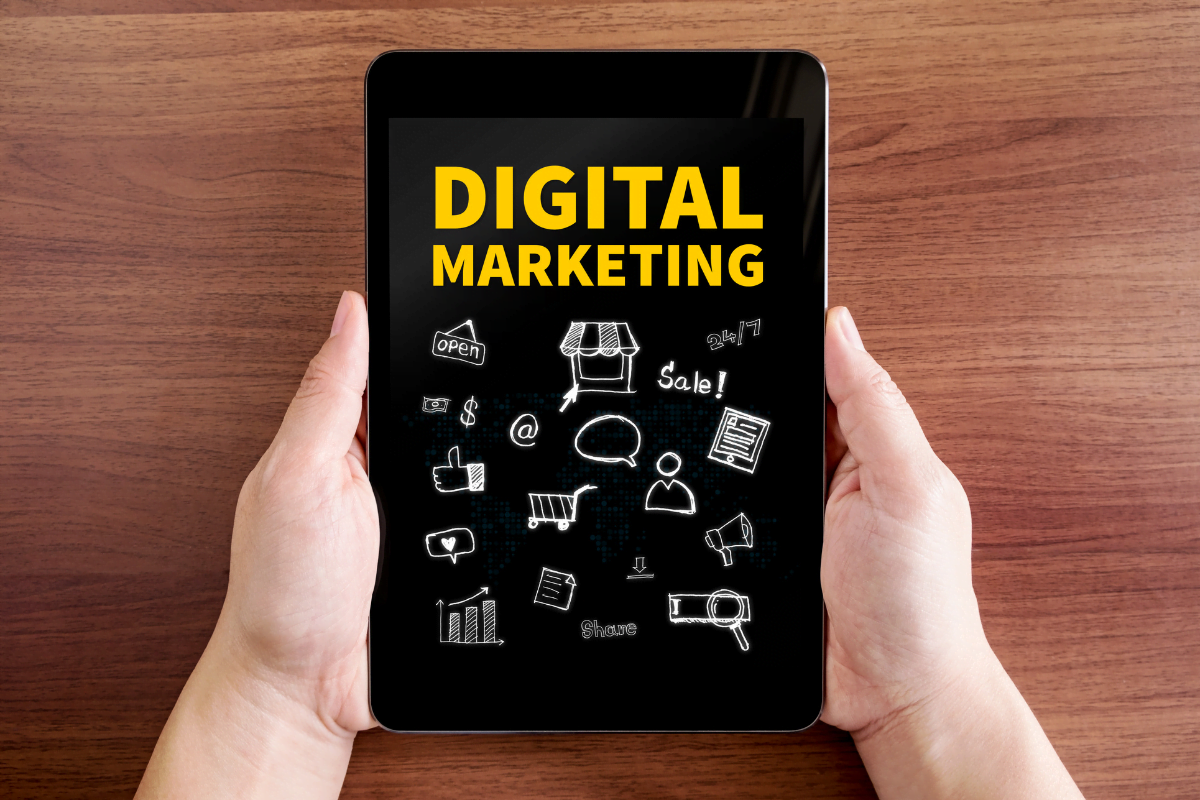Ever feel lost in the world of marketing? “Inbound vs outbound marketing” – it’s all enough to make your head spin! But choosing the right strategy doesn’t have to be confusing.
Today, we’ll delve into inbound and outbound marketing methodologies, helping you determine which approach delivers superior results for your unique needs.
Inbound Vs. Outbound Marketing
What Is Inbound Marketing?

Inbound marketing is all about drawing customers to you. Instead of pushing your message out, you attract people by providing valuable content and experiences tailored to them. This is the essence of the inbound marketing definition.
Key principles of inbound marketing
Attracting customers through content and engagement: You create useful, engaging content that answers your customers’ questions and solves their problems. This could be blogs, videos, or infographics. The goal is to attract people already looking for your offer. This inbound marketing content is what sets you apart.
Permission-based marketing: Permission-based marketing in inbound marketing lets you reach out to people who have expressed interest. They’ve signed up for your newsletter, followed you on social media, or subscribed to your blog. They want to hear from you, which makes your efforts more effective and less intrusive.
Here are some examples of inbound marketing techniques:
- Content marketing: This includes creating and sharing blogs, videos, and infographics. Your content should be informative, interesting, and relevant to your audience.
- SEO (Search Engine Optimization): SEO helps people find your content on search engines like Google. By optimizing your content with the right keywords, you can attract people who are searching for what you offer. This is a crucial part of search engine marketing.
- Social media marketing: Engaging with your audience on platforms like Facebook, Twitter, LinkedIn, and Instagram. Share content, start conversations, and build relationships.
- Email marketing (opt-in newsletters): Send valuable information to people who have chosen to receive your emails. This keeps them engaged and nurtures the relationship over time.
Inbound marketing is a powerful way to build trust and credibility with your audience. By providing value and engaging with your customers on their terms, you create a lasting connection that can lead to long-term success.
What Is Outbound Marketing?

Outbound marketing is about reaching out to a broad audience with your message. Instead of waiting for customers to find you, you push your message out to them.
Key principles of outbound marketing
Pushing messages to a broad audience: Outbound marketing includes broadcasting your message to as many people as possible. You aim to reach a wide audience, hoping to catch the interest of potential customers.
Interruption-based marketing: This approach often interrupts people with your message. It might be an ad on TV during their favorite show or a cold call during dinner. These outbound marketing interruptions are designed to grab attention, even if people aren’t looking for your product or service.
Here are some examples of outbound marketing techniques:
- TV and radio ads: These ads reach a large audience quickly. They can be expensive but are effective for building brand awareness.
- Print advertisements (newspapers, magazines): These ads target readers of specific publications. They can help you reach a specific demographic or geographic area.
- Direct mail: Sending physical mail to potential customers. This can be brochures, catalogs, or postcards. It’s a personal way to reach people, but it can also be costly.
- Cold calling: Reaching out to potential customers by phone. It’s direct and personal but can be intrusive and often has a low success rate.
- Email marketing (non-opt-in): Email marketing used for an outbound strategy involves sending emails to people who haven’t specifically requested them. This can be effective but risks being marked as spam.
Outbound marketing channels like these are a more traditional approach and can be very effective for reaching a large audience quickly. They are especially useful when you need immediate results or want to build brand recognition.
However, they can also be more intrusive and expensive than inbound marketing. Balancing inbound vs outbound strategies can help you create a comprehensive and effective marketing plan.
Comparing Inbound and Outbound Marketing

Let’s compare inbound and outbound marketing to see how they stack up against each other. Understanding the differences can help you choose the right strategy for your business.
Audience Targeting
- Inbound: Targets a specific, interested audience. You create content that appeals to people already looking for what you offer.
- Outbound: Reaches a broad, general audience. Your message is broadcast to as many people as possible, hoping to catch some interest. A typical outbound strategy involves wide-reaching methods to maximize visibility.
Cost Implications
- Inbound: Often lower cost and offers a higher ROI over time. You invest in creating quality content that continues to attract customers.
- Outbound: Typically has a higher initial cost with varied ROI. Outbound marketing campaigns require spending on ads, mailers, and other materials to get immediate visibility.
Consumer Trust and Engagement
- Inbound: Builds trust through valuable content. You provide information that helps and educates your audience, creating a positive customer relationship.
- Outbound: Can be perceived as intrusive. Outbound marketing messages often interrupt the audience, which can sometimes lead to negative reactions.
Measurability and Analytics
- Inbound: Easier to measure and analyze. You can use web analytics and engagement metrics to track how well your content is performing.
- Outbound: Harder to track effectiveness. Traditional media metrics are less precise, making it difficult to measure the impact of your campaigns.
Lead Generation and Conversion
- Inbound: Focuses on quality leads and nurturing them over time. Your goal is to build long-term relationships that convert into loyal customers.
- Outbound: Focuses on quantity and immediate results. Outbound marketing aims to get your message in front of as many people as possible and convert quickly.
By comparing inbound marketing vs. outbound marketing, you can decide which strategy aligns better with your goals and resources.
Both have their strengths and can be effective when used correctly. Balancing inbound and outbound marketing approaches can provide a comprehensive strategy for success.
Choosing the Right Strategy for Your Business

Now that we’ve explored the differences between inbound and outbound marketing, let’s focus on how to choose the right strategy for your business. Consider these factors:
Factors to consider when choosing a marketing strategy
- Business goals: Align your marketing with what you want to achieve. Whether it’s increasing sales, building brand awareness, or expanding into new markets, your strategy should support these goals.
- Target audience: Understand who your customers are and how they prefer to engage with businesses. This knowledge will guide whether you should focus on reaching them through content and education (inbound) or direct outreach (outbound).
- Budget constraints: Evaluate your financial resources and choose a strategy that fits within your budget. Inbound marketing can often be more cost-effective in the long run, but outbound can provide quicker visibility, albeit with higher initial costs.
- Industry type: Consider the nature of your industry. Some industries may benefit more from inbound strategies, where trust and expertise are crucial, while others may rely heavily on outbound methods for immediate lead generation.
Situations where inbound marketing is most effective
- Long-term engagement, trust-building: If your business thrives on building relationships and trust over time, inbound marketing can be highly effective. It allows you to nurture leads and create loyal customers through valuable content and interactions.
Situations where outbound marketing is most effective:
- Immediate visibility, brand awareness: When you need to make a splash quickly or promote a time-sensitive offer, outbound marketing can deliver immediate visibility. It’s effective for boosting brand awareness and reaching a wide audience fast.
By considering these factors and situations, you can determine which marketing strategy — inbound, outbound, or a blend of both — will best meet your business objectives and deliver the results you’re aiming for.
Remember, the right strategy may evolve as your business grows and market conditions change, so stay flexible and responsive to what works best for you.
Integrating Inbound and Outbound Marketing

Integrating inbound and outbound marketing strategies can maximize your marketing efforts. You can build lasting relationships through inbound tactics while gaining immediate visibility and leads with outbound efforts.
Tips for integrating both strategies
- Coordinated campaigns: Align your inbound and outbound efforts to reinforce each other. For example, use inbound content to support a new product launch promoted through outbound channels.
- Consistent messaging: Ensure your brand message is consistent across all channels. Whether it’s a blog post or a TV ad, your audience should recognize and resonate with your brand’s voice.
- Utilizing data from both approaches for comprehensive insights: Analyze data from inbound (like website analytics) and outbound (like sales metrics from campaigns) to refine your strategies. This holistic approach gives you a deeper understanding of what works best for your audience.
Integrating inbound and outbound marketing allows you to leverage the strengths of each approach while mitigating their weaknesses. By combining long-term relationship building with immediate visibility, you create a well-rounded marketing strategy that can drive sustained growth for your business.
Finding a Balanced Approach
Are you focusing too much on one approach? Could a balanced mix of inbound and outbound strategies better serve your business?
Consider implementing a balanced approach that integrates the strengths of both inbound and outbound marketing. This way, you can create a comprehensive strategy that resonates with your audience and drives sustainable growth for your business.
Ready to Optimize Your Marketing Strategy? Work with our team at Newman Web Solutions. Our digital marketing agency in Atlanta specializes in boosting your online presence and driving measurable results. Whether you’re looking to build lasting connections through inbound strategies or boost visibility with outbound tactics, our team is here to help.
Contact us at (404) 301-9189 or schedule your free marketing strategy today!





